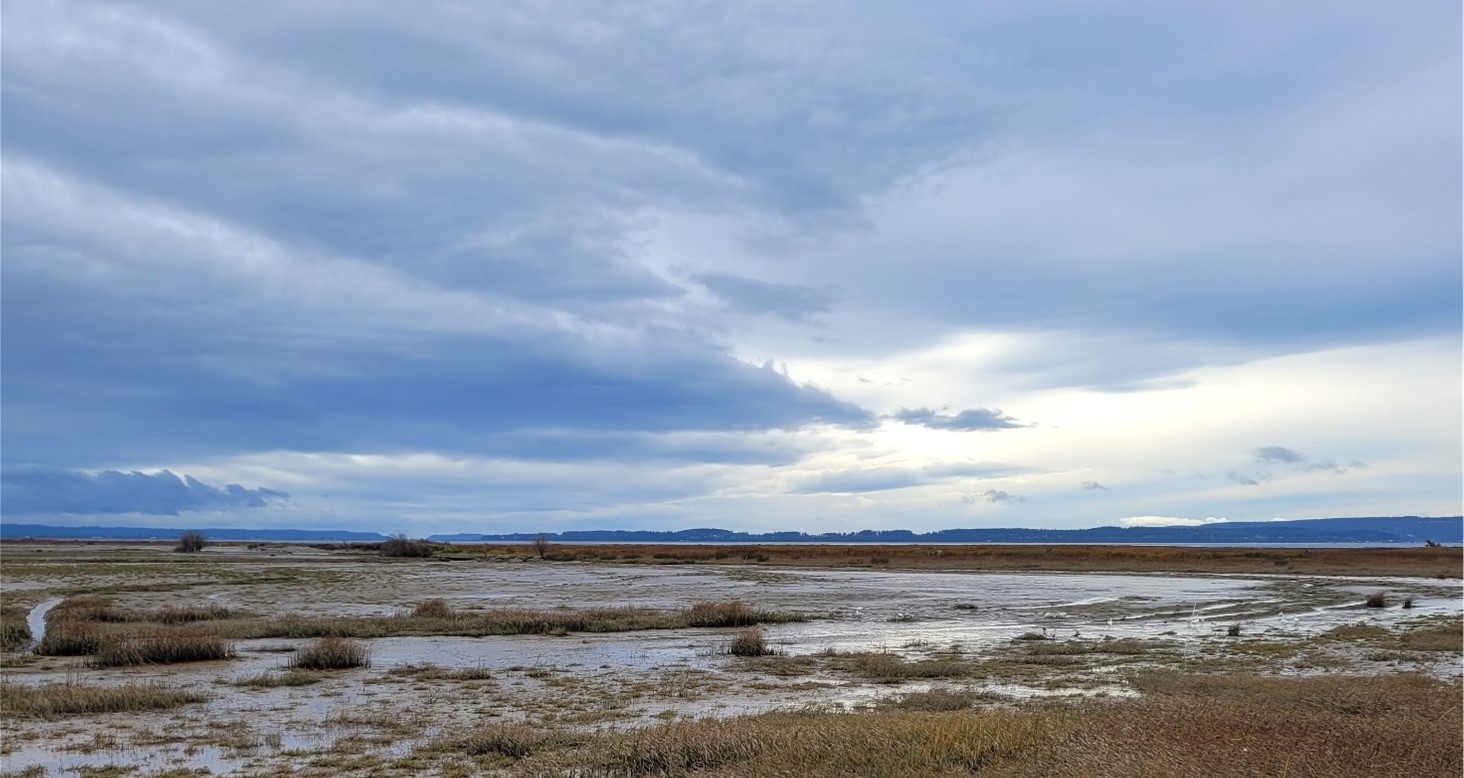Salt Marsh Restoration - Predicting Systems Responses
Salt marsh systems contribute to essential ecological processes such as wildlife habitat, flood risk reduction, carbon sequestration, and improved water quality. Despite the importance of tidal marsh systems, the US west coast is estimated to have lost 85% of historic coastal wetlands. Tidal marsh systems are incredibly dynamic, with complex feedback loops between vegetation, sediment dynamics, and hydrodynamics, resulting in non-linear system responses.
In May 2016, the Washington State Department of Fish and Wildlife removed 1768 lineal meters of existing coastal flood dikes and tide gates to restore the natural tidal prism at Fir Island Farm. Approximately 51 hectares of tidal marsh and 2 hectares of tidal channel habitat were restored. After seven years of post-restoration monitoring, there are numerous lessons to learn from this restored site (Hood, 2019). The site shows evidence of erosion (Figure 1) and unvegetated patches (Figure 2). It is generally understood that salt marsh evolution is driven by erosion and sedimentation which are dependent on bed shear stresses (Temmerman et al., 2005).
The recent advances in computational computing and machine learning allow researchers to implement exploratory models to understand non-linear interactions. Building on a method developed at TU (Hendrickx et al., 2022), we will utilize machine learning to predict shear stress responses under various geometric and forcing scenarios in an idealized salt marsh system. This research aims to provide new insights into the influence of shear stress on tidal marsh platforms to aid in restoration design and implementation. Improving our understanding of tidal marshes is the first step in preserving and restoring these systems.
The main research objectives are:
- Understand hydrodynamics at Fir Island Farm to guide experimental design.
- Examine tidal channel geometry's influence on shear stress distribution in an idealized marsh platform utilizing statistical downscaling and numerical modeling.
- Implement an adaptive design machine learning technique to predict tidal marsh responses under various geometric and forcing scenarios.
Partners
- Fulbright U.S. Student Program
- Skagit River Systems Cooperative
- University of New Mexico
- Delft University of Technology

Contact
If you have any questions about the Salt March project, please contact Noelani Villa (noelani.villa@fulbrightmail.org). The project is supervised by José A. Á. Antolínez (J.A.A.Antolinez@tudelft.nl).
Hendrickx, G. G., Antolínez, J. A. A., & Herman, P. M. J. (2023). Predicting the response of complex systems for coastal management. Coastal Engineering, 182, 104289. https://doi.org/10.1016/J.COASTALENG.2023.104289
Hood, W.G. 2019. Fir Island Farms 3rd-year Post-Restoration Tidal Marsh Monitoring Report. Prepared by Skagit River System Cooperative, LaConner, WA for Washington Department of Fish and Wildlife. 25 pp.
Temmerman, S., Bouma, T. J., Govers, G., Wang, Z. B., de Vries, M. B., & Herman, P. M. J. (2005). Impact of vegetation on flow routing and sedimentation patterns: Three-dimensional modeling for a tidal marsh. Journal of Geophysical Research: Earth Surface, 110(4). https://doi.org/10.1029/2005JF000301




